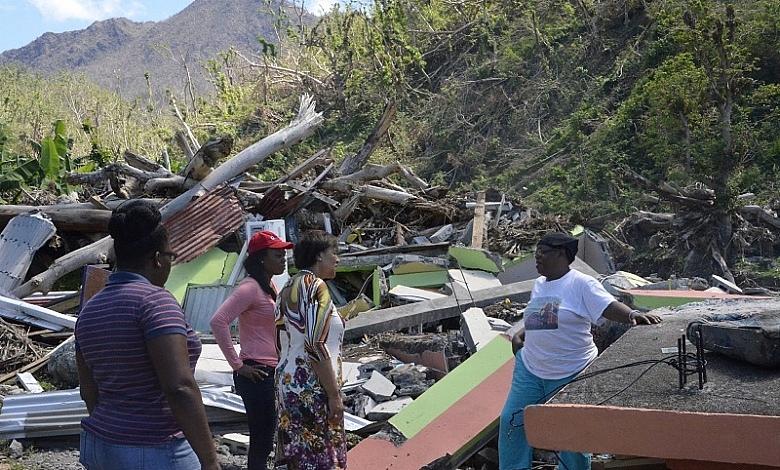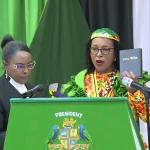The Economic Cost of Hurricanes in Dominica

Dominica’s exposure to hurricanes presents a persistent economic challenge, requiring strategic government intervention. The repeated destruction of homes, roads, and key industries places immense pressure on public funds and disaster relief programs. With mounting recovery costs, the government has placed climate resilience at the forefront, implementing policies focused on hurricane-resistant infrastructure, renewable energy solutions, and economic diversification to protect national progress.
Financial Impact of Major Hurricanes in Dominica
Hurricanes have had devastating financial consequences for Dominica’s economy, often wiping out years of economic progress in a single event. One of the most catastrophic hurricanes in the country’s history was Hurricane David (1979), a Category 5 storm that left 60% of the population homeless. The destruction of banana plantations, homes, and infrastructure led to long-term economic struggles as the country attempted to recover.
More recently, Hurricane Maria (2017) had an even more catastrophic effect. The Category 5 storm caused US$1.3 billion in damages, equivalent to 226% of Dominica’s GDP, making it one of the costliest hurricanes in Caribbean history. The storm destroyed 95% of buildings, completely wiped out agriculture, and crippled the tourism industry, leading to job losses and economic downturns.
Another significant disaster was Tropical Storm Erika (2015), which resulted in US$483 million in damage, amounting to 90% of Dominica’s GDP. Landslides, flooding, and infrastructure collapse displaced thousands of people, forcing the government to seek international financial assistance for rebuilding. The financial burden of these storms extends beyond immediate damage, affecting long-term economic stability and growth.
Impact on Key Economic Sectors
Hurricanes have severely disrupted Dominica’s economy, causing extensive damage to housing, agriculture, and tourism, leading to job losses, reduced exports, and long-term financial instability across multiple sectors.
Housing and Infrastructure
Hurricanes in Dominica have led to massive housing and infrastructure destruction, requiring billions in reconstruction efforts. After Hurricane Maria, an estimated 98% of roofs were destroyed, and entire communities were wiped out. Roads, bridges, and essential services collapsed, forcing Dominica to rebuild using hurricane-resistant designs. However, the financial burden of continuous rebuilding weighs heavily on the economy, leading to increased debt and foreign dependence.
Agriculture and Food Security
Dominica’s economy has historically relied on banana and citrus farming, but hurricanes have consistently devastated agricultural production. After Hurricane Dean (2007), the country’s banana exports plummeted, affecting farmers’ livelihoods and export revenues. Following Hurricane Maria, 90% of crops and 100% of livestock were wiped out, forcing food imports to surge, driving inflation and reducing food security. Recovery in agriculture is often slow, as soil erosion, flooding, and pest outbreaks delay replanting efforts.
Tourism Industry Losses
Tourism, one of Dominica’s primary economic drivers, suffers greatly after hurricanes. Destruction of hotels, eco-lodges, beaches, and natural attractions leads to declining tourist arrivals, reducing foreign exchange earnings. Following Hurricane Maria, tourism revenues dropped sharply, with many resorts remaining closed for months or years. Even now, some areas are still recovering, showing the long-term economic cost of hurricanes on tourism.
Long-Term Economic Challenges
The economic impact of hurricanes extends far beyond immediate damage costs. The repeated cycle of destruction and rebuilding has led to a growing national debt, with Dominica frequently borrowing for reconstruction efforts. Reliance on international aid also raises long-term economic independence and sustainability concerns.
Another major challenge is the high cost of insurance. Due to Dominica’s high risk for hurricanes, many businesses and homeowners struggle to afford insurance, making them more vulnerable to future storms. Furthermore, foreign investors are often hesitant to fund projects in Dominica, given the uncertainty of frequent natural disasters.
Strategies for Economic Resilience
Dominica has prioritized climate resilience and sustainable development to combat the devastating economic impact of hurricanes. The Climate Resilience Execution Agency for Dominica (CREAD) was established to build more substantial infrastructure, protect critical industries, and reduce disaster vulnerability. The government has also implemented hurricane-resistant building codes, ensuring new homes, hotels, and public buildings withstand Category 5 storms.
Another key initiative is the investment in renewable energy, particularly geothermal energy, which aims to make Dominica 100% reliant on sustainable energy by 2030. This will reduce dependence on imported fuel, making the economy more stable and self-sufficient after disasters.
In the agriculture sector, diversification efforts are underway to make farming more resilient, including wind-resistant crops and improved irrigation systems. The government also promotes eco-tourism and digital services, reducing reliance on sectors vulnerable to hurricanes.
The Future of Dominica’s Economy in a Hurricane-Prone World
With climate change increasing the frequency and intensity of hurricanes, Dominica must continue strengthening its disaster preparedness and economic resilience. The country can reduce economic losses and accelerate post-hurricane recovery by investing in infrastructure, renewable energy, and sustainable industries. While the financial cost of hurricanes remains a significant challenge, proactive policies and climate adaptation strategies will be critical in ensuring a more stable and disaster-resistant economy in the years ahead.




